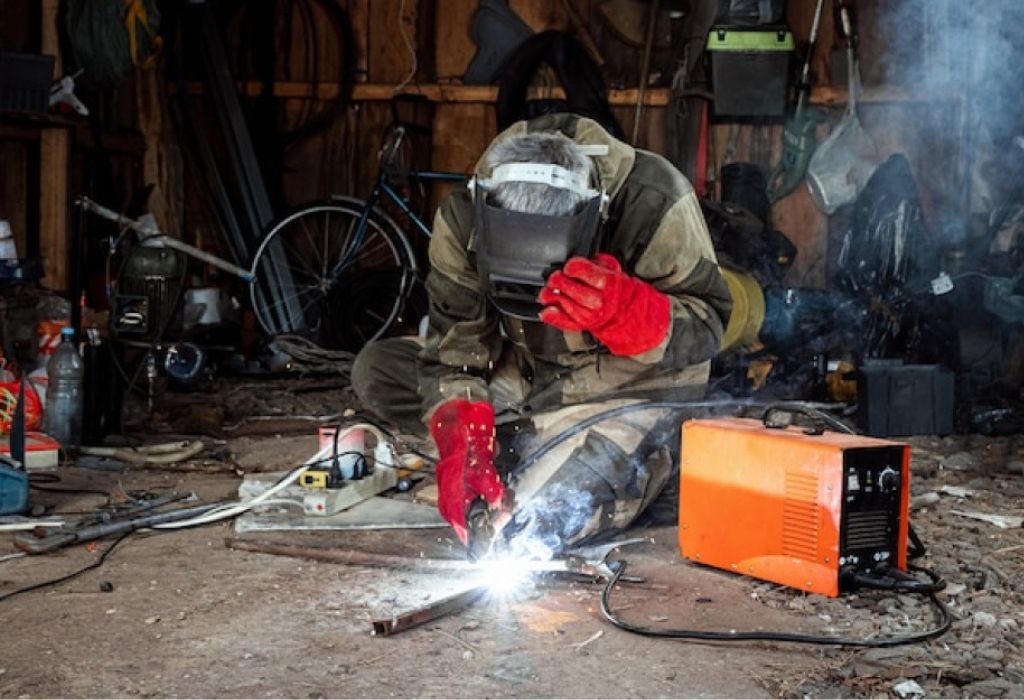The clang of steel echoes across a fabrication shop as welders strike arcs at dawn. For many, the pressing question is how many hours does a welder work in a typical week.
Welding is not confined to a single routine. Some welders clock steady 40-hour weeks in manufacturing shops, while others grind through 60- to 80-hour schedules during refinery turnarounds or pipeline shutdowns.
The wide range sparks curiosity about what to truly expect in this career.
According to the U.S. Bureau of Labor Statistics, welders generally work full time, with many exceeding 40 hours when deadlines loom source.
In high-demand projects, job postings often advertise 60–84 hours per week, especially during seasonal outages source.
The demands go beyond numbers. Extended 10- or 12-hour shifts often mean weekends and nights, requiring welders to balance fatigue, safety, and personal life.
For those willing to endure the long hours, overtime can dramatically boost paychecks, sometimes doubling weekly income.
At the same time, shop welders enjoy more predictable schedules, often on 8-hour or 10-hour shifts with optional overtime.
These roles offer stability but may not provide the financial peaks seen in field and travel welding.
Understanding these differences is critical for anyone entering the trade or planning their career path. By examining industry, project type, and scheduling systems, a clear picture emerges of just how demanding welding hours can be—and how they directly affect income and lifestyle.
What Determines a Welder’s Weekly Hours?

The number of hours a welder works depends heavily on industry, job setting, and project demands. While shop welders may have fixed shifts, field welders often face unpredictable schedules.
Manufacturing facilities typically follow structured hours, such as 8- or 10-hour shifts. In contrast, pipeline and shutdown projects can extend into 12-hour days, seven days a week.
Union agreements, staffing shortages, and project deadlines also affect scheduling. Some welders enjoy capped hours with mandated rest, while others face intense overtime during peak seasons.
Traveling welders and contractors often accept long shifts in exchange for per diem and higher pay. These roles may involve extended weeks followed by downtime between projects.
Do most welders work 40 hours?
Yes, many welders average around 40 hours, though overtime is common in busy industries.
Why do some weeks reach 60+ hours?
Major turnarounds, deadlines, and outages push schedules far beyond the standard workweek.
Are weekends typical for welders?
Yes, weekend work is frequent in 24/7 operations like refineries and construction sites.
Do unions affect weekly hours?
Union contracts often cap hours, regulate overtime, and mandate rest periods.
Are travel welders expected to work longer?
Yes, traveling roles often involve extended shifts to maximize productivity before a project ends.
Typical Schedules by Setting (8s, 10s, 12s)
Welders work under a variety of shift systems depending on industry and employer. The most common schedules include 8-hour, 10-hour, and 12-hour shifts.
A 5×8 schedule means five days of 8 hours each, often Monday through Friday. A 4×10 system compresses 40 hours into four days, leaving longer weekends.
Some facilities rely on 12-hour rotations to cover around-the-clock operations. These shifts may follow DuPont or 2-2-3 schedules, balancing work and rest over a two-week cycle.
The result is that weekly totals can average 40–42 hours, but individual weeks during rotation may climb higher. Welders in continuous production must adapt to alternating day and night shifts.
Is 4×10 common in shops?
Yes, many fabrication plants prefer four 10-hour shifts for efficiency.
What about 12s?
Twelve-hour shifts are common in refineries and 24/7 operations.
Are night shifts required?
Yes, many facilities maintain dedicated night crews.
Do rotations alternate between days and nights?
Yes, schedules often flip to balance staffing needs.
Does rotation reduce fatigue?
It spreads workload but can challenge sleep patterns.
Manufacturing & Shop Welding: Steadier Hours
Shop welders often benefit from stable, predictable schedules. Most fabrication shops run 40–50 hours per week with optional overtime.
These roles are attractive for welders seeking consistency and work-life balance. Weekend work is less common but may arise during order surges.
Evening and night shifts are available in some shops. They often include shift differentials, which raise hourly pay.
Compared to field welding, shop hours rarely exceed 55 per week. This stability makes shop jobs ideal for welders who prioritize steady income and time at home.
How many hours does a welder work in a shop?
Typically 40–50 hours per week with optional overtime.
Do shops offer weekend shifts?
Occasionally, depending on production demand.
Do shops provide shift differentials?
Yes, many pay more for evening or night shifts.
Are shop welders required to travel?
Rarely, most shop welders stay local.
Is overtime voluntary in shops?
Often, though peak demand can make it expected.
Field, Pipeline & Shutdown Welding: Long Weeks
Field welders face some of the most grueling hours in the trade. Pipeline and shutdown projects frequently require 60–84 hours per week.
A 7×12 schedule—seven days of 12-hour shifts—is not uncommon during refinery turnarounds. These intense periods usually last weeks, not months.
The reward is substantial overtime pay and per diem allowances. However, fatigue and safety risks increase when welders push beyond 70 hours regularly.
Travel roles mean being away from home for weeks at a time. Welders must weigh high pay against personal sacrifices.
How many hours does a welder work on shutdowns?
Commonly 60–72 hours, sometimes reaching 84.
Is 7×12 realistic?
Yes, but usually limited to outage seasons.
Do all pipeline jobs require long weeks?
Not all, but many involve extended schedules.
How long do peak schedules last?
Typically 2–8 weeks, depending on project size.
Is the pay worth the hours?
For many welders, overtime and per diem make it worthwhile.
Night Shifts, Weekends & Rotations

Many industries that employ welders run on a 24/7 schedule. This requires night shifts, weekend rotations, and extended workweeks.
Night shifts often come with small pay differentials. However, they can disrupt sleep patterns and family routines.
Weekend work is especially common during outages and construction projects. In contrast, shop welders are less likely to face weekend requirements.
Shift rotations are demanding but keep production continuous. Welders must be adaptable to maintain performance.
Are night shifts common?
Yes, particularly in refineries, shipyards, and continuous production facilities.
Do nights pay more?
Yes, many employers offer shift differential pay.
Do welders often work weekends?
Yes, especially in construction and shutdown projects.
Do rotating schedules hurt work-life balance?
Yes, adjusting between days and nights can be difficult.
Are rotations mandatory?
In 24/7 operations, yes, rotations are often required.
Overtime Reality: Pay, Fatigue & Safety
Overtime is one of the biggest factors shaping welder schedules. Time-and-a-half or double-time policies boost income significantly.
Some shop welders add 5–15 hours of OT per week. Field welders may log 20–40 hours of OT during busy seasons.
The financial rewards are high, but fatigue increases accident risk. Welders must balance income with safety and health.
Employers may limit overtime to ensure productivity and compliance with labor laws. Still, many projects rely on heavy overtime to meet deadlines.
Is overtime guaranteed?
No, it depends on demand and project urgency.
How much OT is common?
5–15 hours in shops, 20–40 in field jobs.
Does OT increase safety risks?
Yes, fatigue raises the chance of accidents.
Is OT worth it?
Financially yes, but rest and recovery are essential.
Can overtime be refused?
In some jobs yes, but in others it is expected.
Apprentices, Union vs Non-Union: How Hours Differ
Apprentices often balance training with full-time work. Their schedules may be slightly lighter but still demanding.
Union welders typically have more structured schedules with clear overtime rules. Non-union welders may face more variability in weekly hours.
Union agreements often guarantee rest periods and set maximum shift lengths. This reduces burnout and improves safety.
Non-union roles may offer more flexibility but with less predictability. Welders must weigh stability against potential earnings.
Do apprentices work full time?
Yes, though training hours may reduce shop time.
Are union hours more predictable?
Yes, contracts enforce structure and consistency.
Do non-union welders work longer?
Often yes, especially when projects run behind.
Does seniority matter?
Yes, senior welders may get priority for overtime or lighter shifts.
Are union welders safer from fatigue?
Yes, enforced rules lower overtime risks.
Real-World Week Examples
Examples show how hours vary by setting and project type.
A fabrication shop welder may work 4×10s plus 5 hours of OT for a 45-hour week. A plant welder might rotate 3×12s followed by 3 days off, averaging 42 hours.
A pipeline shutdown could demand 7×12s for 2 weeks straight, totaling 84 hours weekly. These intense stretches are followed by periods of rest or layoff.
What is the most balanced schedule?
Many prefer 4×10s for steady income and long weekends.
What is the highest earning schedule?
7×12s during shutdowns often generate the most income.
Do short projects pay more weekly?
Yes, but they end quickly, leaving gaps.
How to prepare for peak weeks?
Budget and rest ahead of intense schedules.
Should new welders start with long weeks?
Beginners are better off building stamina gradually.
How to Choose a Schedule (and Negotiate It)

Welders should align schedules with lifestyle and financial goals. Shop jobs suit those seeking stability, while field jobs fit welders chasing high pay.
Job postings usually disclose expected hours and overtime. Always confirm details before accepting a role.
Some employers allow shift preferences, especially in shops. Field projects are less flexible but may negotiate per diem or overtime policies.
Choosing the right schedule helps welders manage income, fatigue, and personal commitments.
Can welders request specific shifts?
Yes, in some shops with multiple shift options.
Do postings reveal hours upfront?
Strong employers share minimum hours and OT expectations.
Can schedules be temporary?
Yes, some welders rotate between day and night based on demand.
Do employers guarantee OT?
Rarely—overtime depends on workload.
Should schedules affect job choice?
Yes, hours directly impact income, health, and family life.
Conclusion
So, how many hours does a welder work? The answer depends on setting, season, and job type.
Shop welders average 40–50 hours per week, while field welders often exceed 60 during peak projects. Outage weeks can push to 84 hours, though these are temporary.
For welders, balancing income with rest is essential. Understanding schedules upfront helps match expectations, career goals, and lifestyle.

I’m Darrell Julian, the founder, lead writer, and hands-on welding enthusiast behind ArcWeldingPro.com. With more than 15 years of real-world welding experience, I created this platform to share what I’ve learned in the field, in the shop, and in the heat of the arc.


